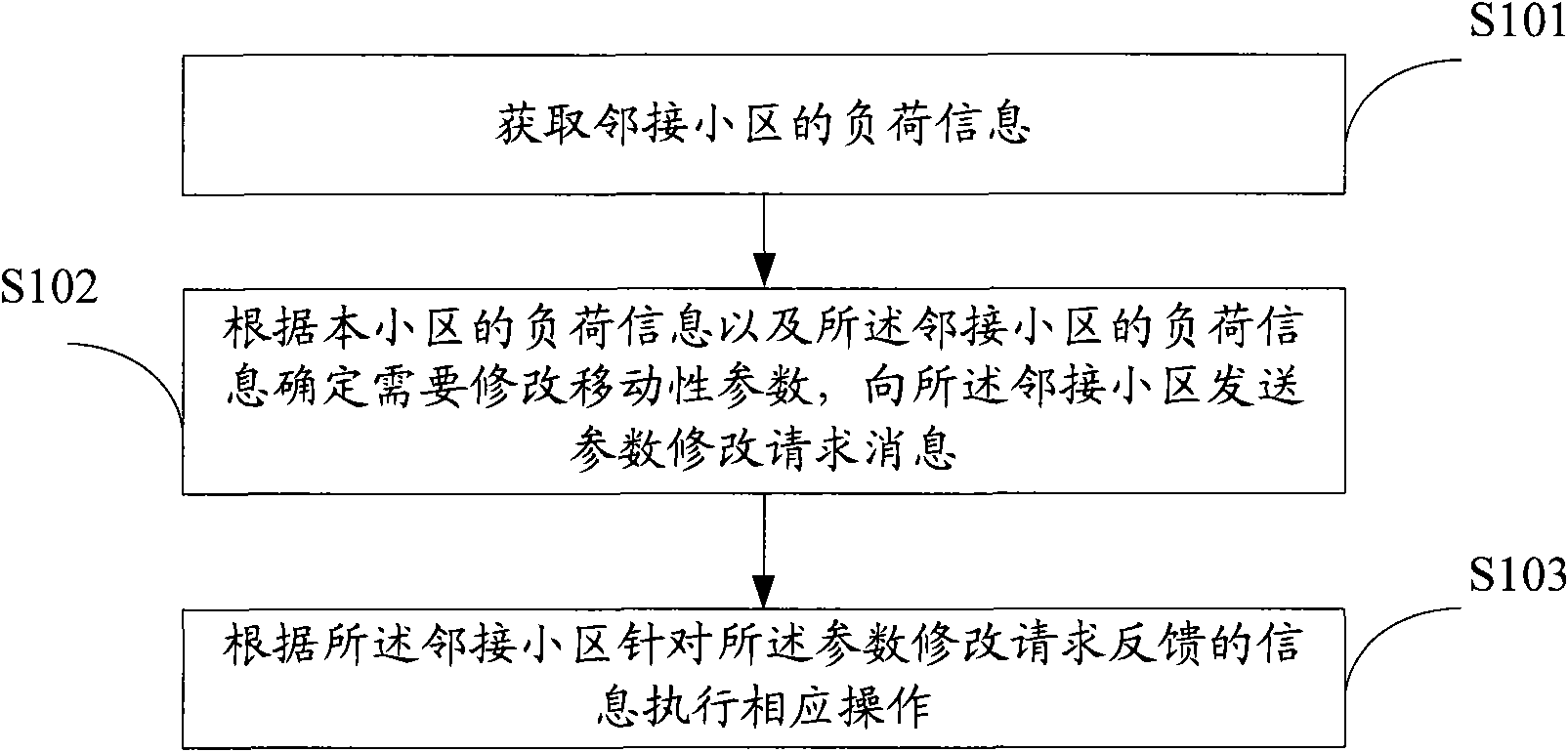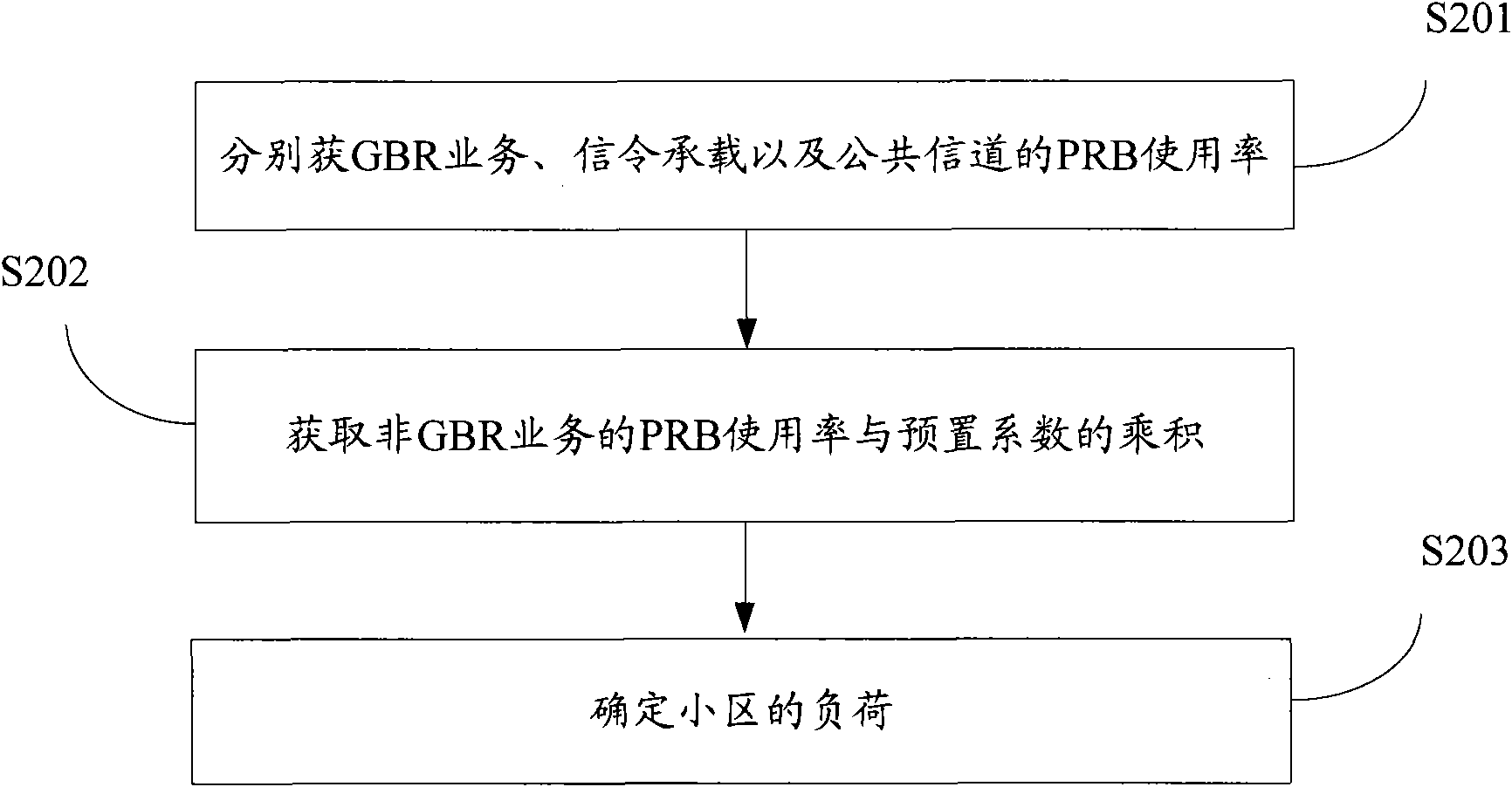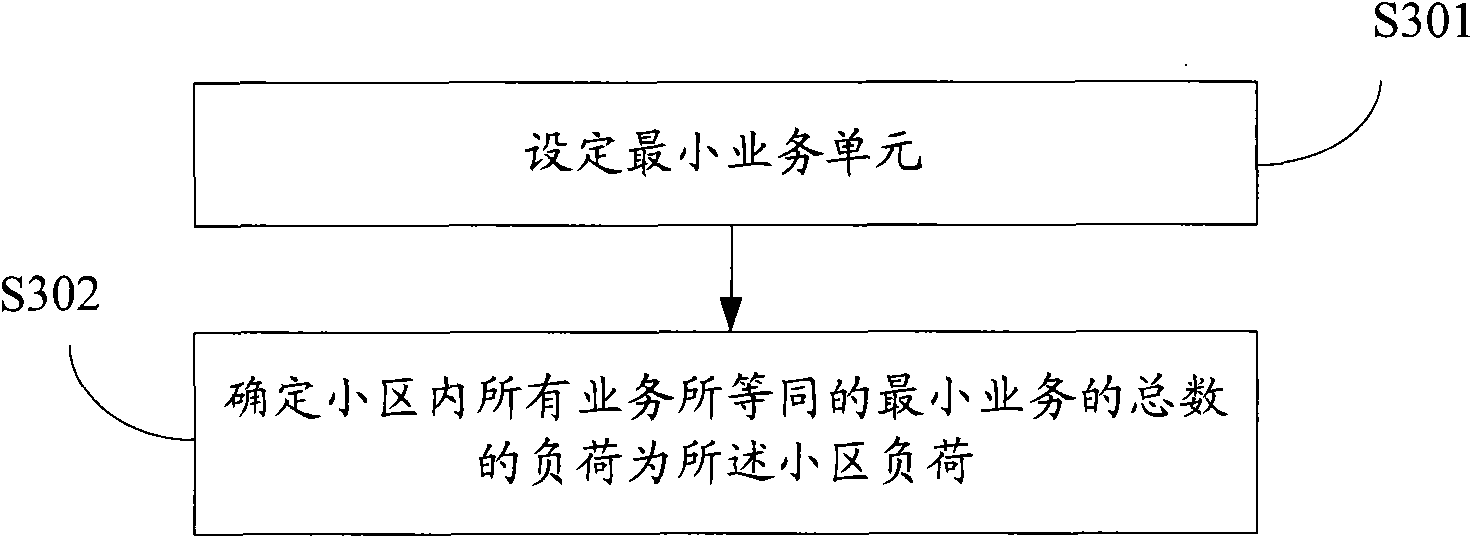Cell load equalization method, and cell load evaluation method and device
一种负荷均衡、负荷的技术,应用在移动通信领域,能够解决没有给出实现方案、负荷定义不够完善等问题,达到提高成功率、减少接入时延、提高容量的效果
- Summary
- Abstract
- Description
- Claims
- Application Information
AI Technical Summary
Problems solved by technology
Method used
Image
Examples
Embodiment 1
[0036] In the first embodiment, the air interface load of the cell is calculated according to the PRB usage rate.
[0037] The estimation of cell load can be divided into the following four parts:
[0038] 1) The load of GBR (Guaranteed Bit Rate) service;
[0039] 2) The load of non-GBR services;
[0040] 3) Load carried by signaling;
[0041] 4) The load of the common channel.
[0042] Since GBR services, signaling bearers and common channels must meet the guaranteed rate, the rate is relatively fixed, and the PRB occupied by it is also relatively fixed. Therefore, when calculating the cell load, the PRB can be used directly for these services Occupancy rate to describe its contribution to the system load.
[0043] For non-GBR services, because the rate is changed, it can be reduced to 0 at some moments. Therefore, when calculating the cell load, the PRB occupancy rate cannot be directly used to describe its contribution to the system load. The PRB occupancy rate of non-GBR services ne...
Embodiment 2
[0070] In the second embodiment, the solution of calculating the cell load by the minimum number of business units can improve the accuracy of calculating the cell load.
Embodiment 3
[0071] The following describes the third embodiment: the system load is evaluated according to the information of the resources (remaining capacity) that can be allocated to the cell
[0072] Different cells have different capacities, and only the resource occupation status cannot reflect the remaining capacity of the cell, that is, the resource status that the cell can still provide. Therefore, when a new user accesses, the remaining capacity information of the cell also needs to be considered. The remaining capacity of the cell is the resource status that the cell can allocate to new users.
[0073] Since the rate of non-GBR services is variable, that is to say, the resources occupied by them can be allocated to other services in some cases. Therefore, the remaining capacity of the cell is calculated based on the idle resources of the cell plus the allocated resources for non-GBR services. Among the resources of the GBR service, resources that can be allocated to other users und...
PUM
 Login to View More
Login to View More Abstract
Description
Claims
Application Information
 Login to View More
Login to View More - Generate Ideas
- Intellectual Property
- Life Sciences
- Materials
- Tech Scout
- Unparalleled Data Quality
- Higher Quality Content
- 60% Fewer Hallucinations
Browse by: Latest US Patents, China's latest patents, Technical Efficacy Thesaurus, Application Domain, Technology Topic, Popular Technical Reports.
© 2025 PatSnap. All rights reserved.Legal|Privacy policy|Modern Slavery Act Transparency Statement|Sitemap|About US| Contact US: help@patsnap.com



